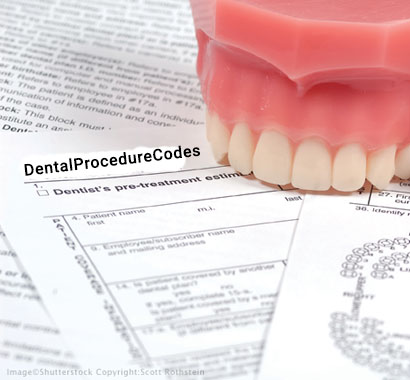Dental Procedure Codes
Dental procedure codes are intended for use by dental hygienists who wish to bill their clients directly for services and provincial/territorial dental hygiene associations who publish suggested fees (if applicable) in their dental hygiene service guides.
A dentist`s clinical decisions determine what services (procedures) are delivered to a patient by this code.
Latest Viewed Dental Procedure Codes
Dental code list with latest updates.Dental procedure codes are a standardized system used to describe and identify dental procedures. These codes are used by dental insurance companies, healthcare providers, and other organizations to accurately document and bill for dental services. In this article, we will explore what dental procedure codes are, how they are used, and why they are important for dental healthcare.
What are Dental Procedure Codes?
Dental procedure codes, also known as Current Dental Terminology (CDT) codes, are a standardized system used to identify and describe dental procedures. These codes were developed by the American Dental Association (ADA) and are regularly updated to reflect changes in dental technology and practice.
Dental procedure codes are used to identify and bill for a wide range of dental procedures, from routine cleanings and fillings to more complex treatments such as root canals and oral surgery. Each code corresponds to a specific procedure and includes information such as the type of service, the materials used, and the amount of time required to complete the procedure.
How are Dental Procedure Codes Used?
Dental procedure codes are used by dental healthcare providers to document the services they provide to patients. These codes are also used by dental insurance companies to process and pay claims for dental services. In addition, dental procedure codes are used by government agencies and researchers to track and analyze dental healthcare trends and outcomes.
When a patient receives dental treatment, the healthcare provider documents the procedures performed using the appropriate dental procedure codes. The healthcare provider then submits a claim to the patient's dental insurance company, which uses the codes to determine the amount of coverage for the services provided. If the claim is approved, the insurance company will pay the healthcare provider for the services rendered.
Why are Dental Procedure Codes Important?
Dental procedure codes are important for several reasons. First, they help to ensure accurate billing and payment for dental services. By using standardized codes to describe dental procedures, healthcare providers and insurance companies can communicate more effectively and avoid confusion or errors in billing.
Second, dental procedure codes help to improve the quality of dental care. By tracking the types of procedures performed and their outcomes, dental healthcare providers can identify areas for improvement and develop strategies to provide better care to their patients.
Dental procedure codes are important for research and public health initiatives. By tracking dental healthcare trends and outcomes using standardized codes, researchers and government agencies can better understand the factors that contribute to dental health and develop policies and programs to improve access to dental care and promote better oral health.
DPC View In Dent

Most dentists in Australia are general dentists - they diagnose and treat diseases of the teeth, gums and mouth. Some are specialists, who have done extra training in a particular area. For example, orthodontists diagnose and treat crooked teeth, bad bites and poorly aligned jaws. Endodontists specialise in the tooth and its interior.
Dental Terms
Select the link above to view a glossary listing of common dental benefit terms.
